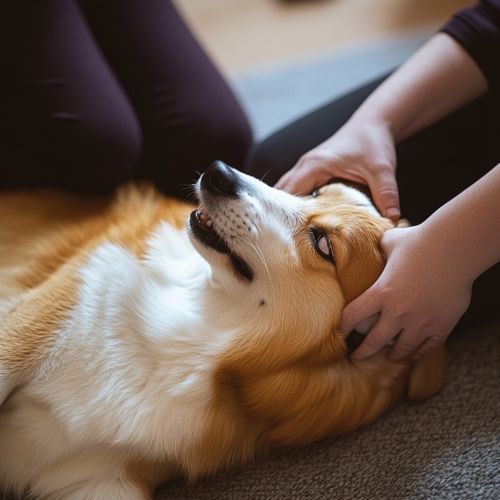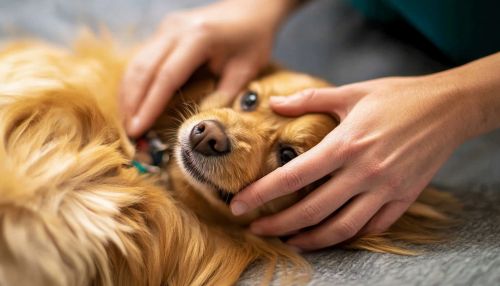Heimlich Maneuver for Dogs
Introduction
The Heimlich Maneuver, also known as abdominal thrusts, is a first aid procedure used to treat upper airway obstructions (or choking) by foreign objects. While it is commonly associated with humans, it can also be adapted for use on dogs. This article provides a comprehensive guide to performing the Heimlich Maneuver on dogs, including indications, techniques, and precautions.
Anatomy of Canine Airway
Understanding the anatomy of a dog's airway is crucial for effectively performing the Heimlich Maneuver. The canine respiratory system includes the nasal passages, pharynx, larynx, trachea, bronchi, and lungs. The trachea, or windpipe, is a tube that connects the larynx to the bronchi and is the primary pathway for air to enter the lungs. Obstructions typically occur in the trachea or larynx, necessitating immediate intervention.
Indications for the Heimlich Maneuver
The Heimlich Maneuver should be performed on a dog only when there is a clear indication of choking. Signs of choking in dogs include:
- Difficulty breathing
- Gagging or retching
- Pawing at the mouth
- Cyanosis (bluish discoloration of the gums and tongue)
- Unconsciousness
Techniques for Performing the Heimlich Maneuver on Dogs
The technique for performing the Heimlich Maneuver on dogs varies depending on the size of the dog. Below are the steps for small and large dogs.
Small Dogs
1. **Assess the situation:** Ensure the dog is indeed choking and not experiencing another medical issue. 2. **Position the dog:** Hold the dog with its back against your chest, similar to how you would hold a human infant. 3. **Locate the ribcage:** Find the point where the ribs end and the soft abdomen begins. 4. **Perform abdominal thrusts:** Use the flat side of your fist to apply quick, upward thrusts just below the ribcage. Repeat until the object is expelled.
Large Dogs
1. **Assess the situation:** Confirm that the dog is choking. 2. **Position the dog:** If the dog is standing, stand behind it. If the dog is lying down, position it on its side. 3. **Locate the ribcage:** Identify the area just below the ribcage. 4. **Perform abdominal thrusts:** For a standing dog, wrap your arms around the dog's abdomen and apply quick, upward thrusts. For a lying dog, place one hand on the back for support and use the other hand to apply thrusts to the abdomen. Repeat until the object is expelled.
Precautions and Considerations
Performing the Heimlich Maneuver on a dog carries certain risks, including injury to the internal organs. Therefore, it should only be performed when absolutely necessary. After performing the maneuver, it is essential to seek immediate veterinary care to ensure that no internal damage has occurred and to address any underlying issues that may have caused the choking.
Post-Maneuver Care
After the object has been expelled, monitor the dog closely for any signs of distress or complications. Common post-maneuver issues include:
- Respiratory distress
- Internal injuries
- Shock
Immediate veterinary evaluation is crucial to address these potential complications.
Preventive Measures
Preventing choking in dogs involves several strategies:
- **Supervision:** Always supervise dogs when they are eating or playing with toys.
- **Appropriate toys:** Provide toys that are suitable for the dog's size and chewing habits.
- **Diet:** Avoid giving dogs bones or other items that can splinter and cause choking.
See Also


References
- Heimlich, H. J. (1976). Heimlich's Maneuvers: The Story of a Medical Breakthrough. Plenum Press.
- Tams, T. R. (2003). Handbook of Small Animal Gastroenterology. Elsevier Health Sciences.
